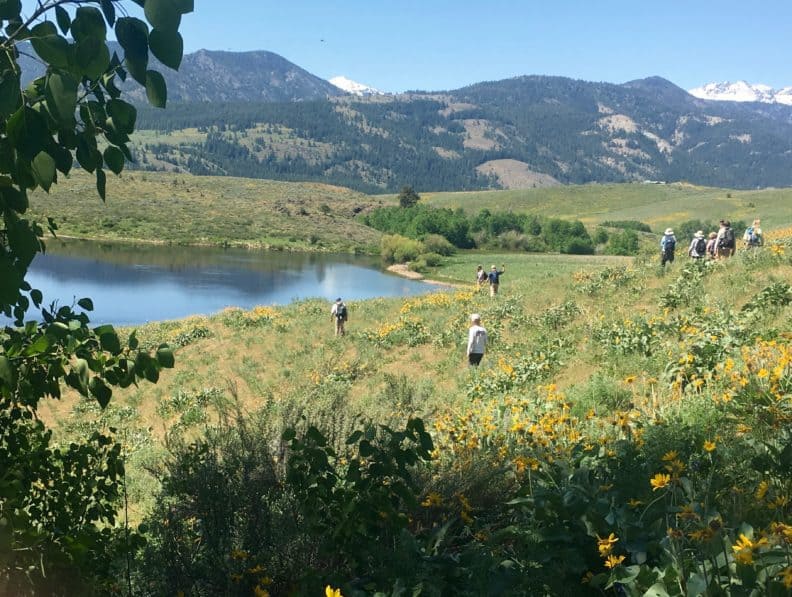
The Search for Snakes in the Methow Valley
Snakes get a bad rap, yet they become fascinating, even personable, once you learn about their special niche within our local ecosystem. These cold-blooded creatures need hiding spaces to take refuge from the hot and cold, while also needing places to bask in sunlight to warm their bodies, and the Methow Valley is a premier classroom for finding them in their natural habitats.
On May 13, 2018, graduate students Amy Sanchez and Gina Roberti assisted with the Spring Snake Search, hosted by the North Cascades Institute, over in the Methow Valley. They joined field biologists Scott Fitkin and John Rohrer to get a closer look at Eastern Washington’s reptiles. Located just over the crest of the North Cascades, participants were treated to sunny weather, dramatic canyon views, and the arrowleaf balsamroot wildflowers in bloom. And of course, intimate encounters with snakes, too!
Together, the team surveyed for snakes near active den sites and recorded their observations for the Center for Snake Conservation’s nationwide effort to create a database of the continent’s snake populations. Below are photos from their adventures, thanks to photographer Gina Roberti. Enjoy!
Photos from the Methow Snake Hunt
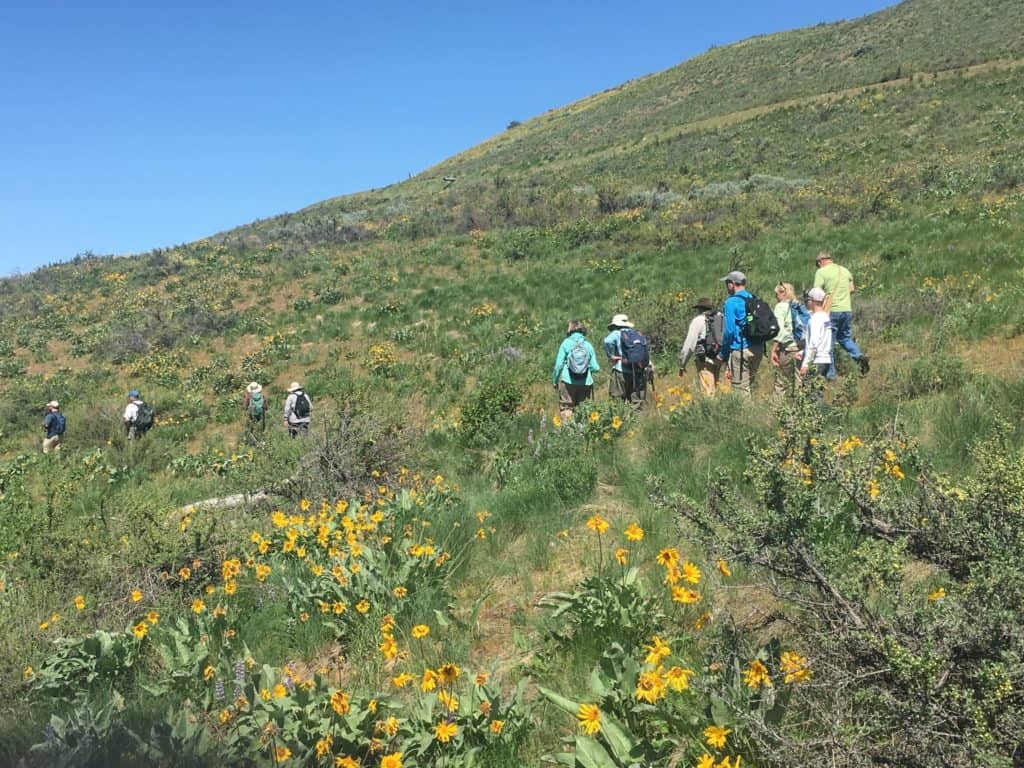
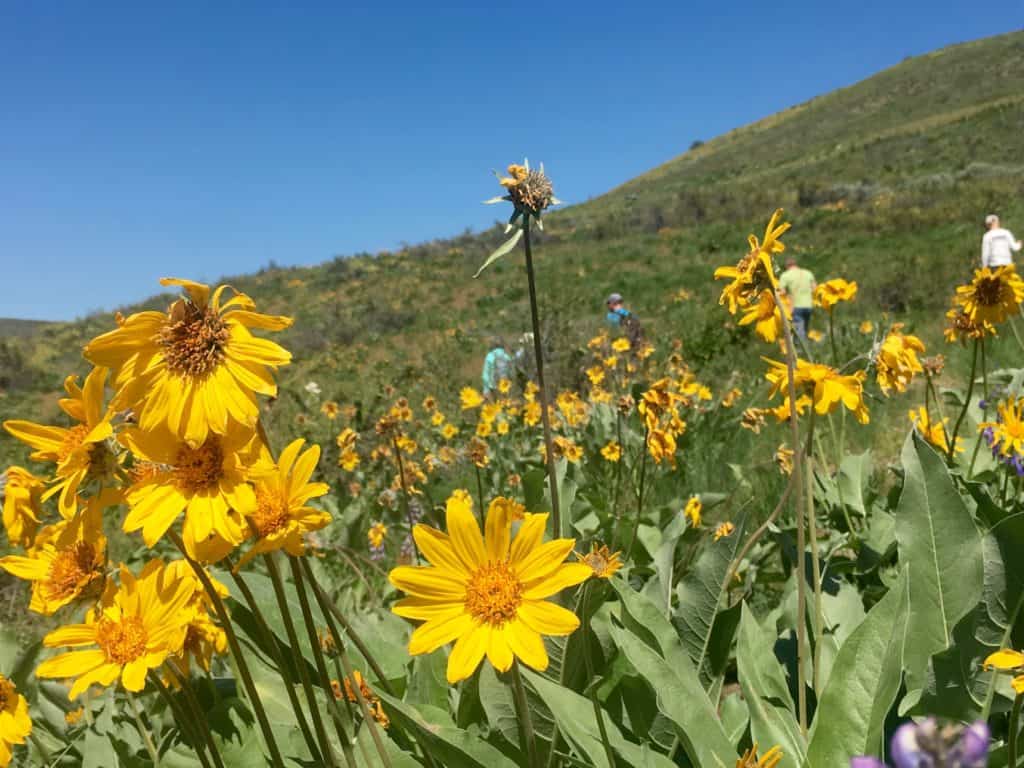

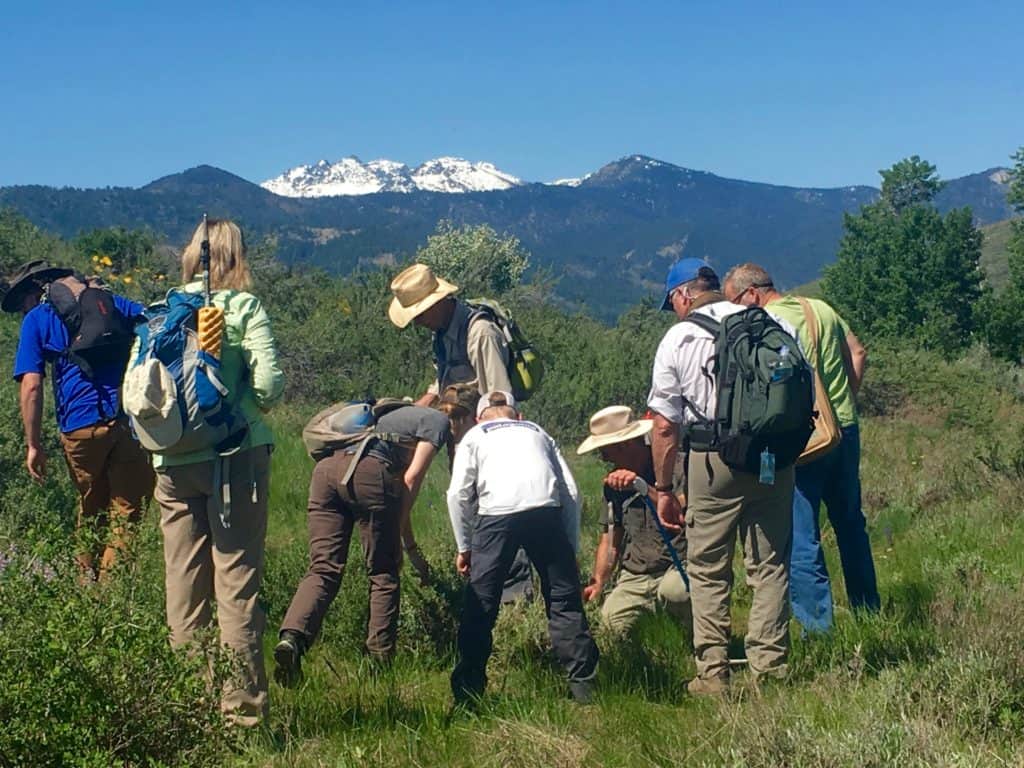
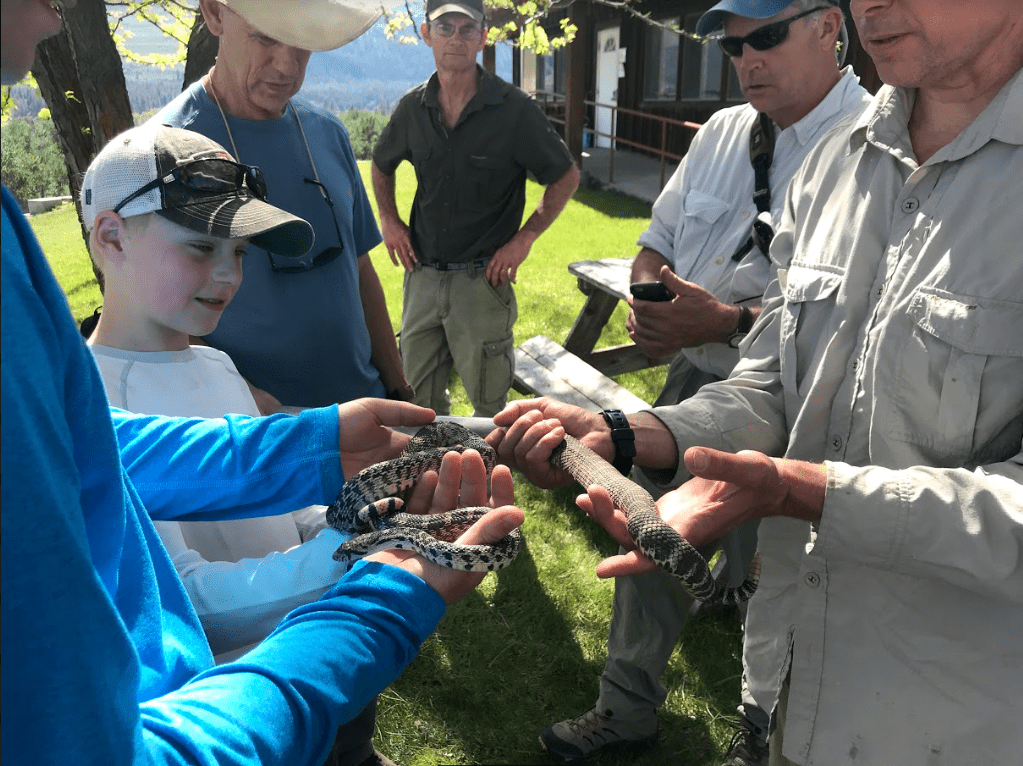
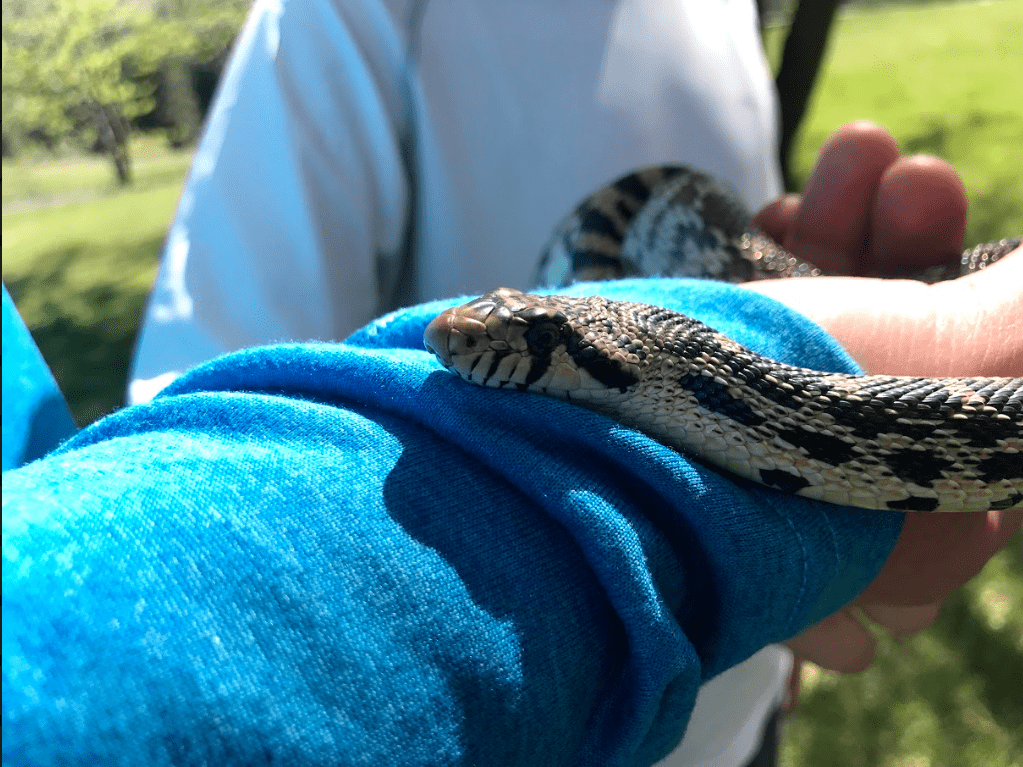
Facts about Snakes of the Methow
- Western rattlesnakes are common in dry rocky areas, but are sometimes found in dry forests
- Rattlesnakes feed on mice, wood rates, ground squirrels, and rabbits
- Rattlesnakes emerge from their dens in April and mate in May.
- Female rattlesnakes give birth to ~8 fully developed and venomous young in the fall
- Rattlesnakes are most active at night and dusk, and den with many snakes of several species
- The Gopher snake lives in dry grass, shrub and forest habitats
- Gopher snakes feed on small mammals and birds, and kills their prey by constriction
- Gopher snakes mate in April and May; males have been observed in “combat” in this season
- ~8 eggs are laid in July, often in abandoned mammal burrows; nests are often communal. Young hatch in September.
- The gopher snake will often rattle tail in dry leaves to imitate the rattlesnake
*All facts are courtesy of Dana Visalli / The Methow Naturalist


I can certainly see where it’s okay to hold a gopher snake. However how is it okay to be holding a Western Rattlesnake without any protection from a bite?
Am I missing something?
Thanks!
Pat
Hello Pat,
In the photo, the rattlesnake is behind the gopher snake, in a plastic tube. Tricky to see because the two snakes have similar coloration and overlap in this photograph.
Cheers!
Gina